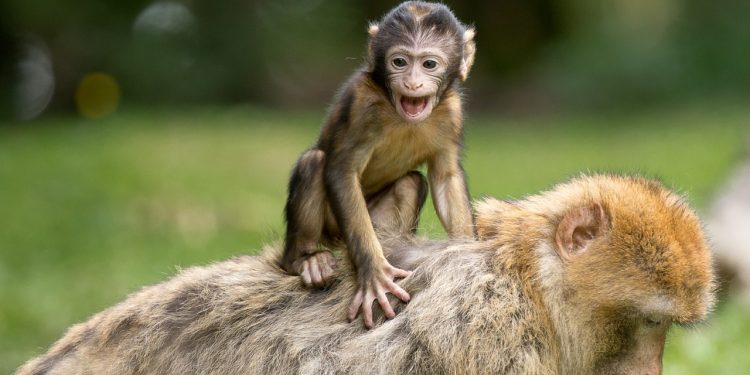
Monkey Day
Observed on December 14th annually, Monkey Day is an unofficial international holiday. The purpose of this holiday is to celebrate monkeys and other non-human primates such as lemurs, apes, and tarsiers. It’s known by its other name, International Monkey Day, and is often used as a day for animal care organizations to raise money and awareness about the problems affecting modern monkeys.
The destruction of habitat due to tropical forest clearing, the hunting of primates for the illegal wildlife trade and food, and the effects of global warming are putting the lives of monkeys all over the world in danger. This makes this holiday more relevant now than it has ever been in the past.
The History of Monkey Day
Monkey Day can be traced back to two art students at Michigan State University. Casey Sorrow scribbled “Monkey Day” on his friend’s calendar as a joke, and the two of them celebrated it as a holiday in 2000.
These two art students began to incorporate Monkey Day into their alternative comics that they published online, and that’s when this holiday began to take off. It eventually spread across the United States and Canada, and then to Europe, South America, Asia, and Africa.
It was even written up in The Washington Post when they described the holiday as a day on which people can take the time to learn about these intelligent primates. Monkey Day is now a day that’s observed by animal rights activists and environmental activists.
Interesting Facts About Monkeys
Since we’re talking about Monkey Day, we think that it’s appropriate that we dig into some of the bits of trivia we learned about these amazing primates. The following facts about monkeys and other primates were uncovered by us as we did the research for this holiday. We’re sure they will entertain everyone who reads them, or at least, that’s our hope.
There Are Hundreds of Monkey Species
What few people realize is that there aren’t just a dozen or so monkey species in the world. No, there are over 260 different species all over the globe. The term “monkey” is simply the common name for groups of primate mammals in the Simiiformes infraorder.
Monkeys Are Divided Into Two Groups
Monkeys are divided into two different groups by experts. These two groups are Old World Monkeys and New World Monkeys. Old World Monkeys include the monkeys that live in Africa and Asia.
These include baboons, geladas, mandrills, patas monkeys, leaf monkeys, macaques, and snub-nosed monkeys. New World Monkeys are monkeys that are from South America. New World Monkeys include titis, howler monkeys, sakis, uakaris, tamarins, and marmosets.
Monkeys Aren’t Vegetarians But Are Instead Omnivores
Some people have the idea that monkeys only eat bananas, fruits, and maybe the occasional leaf, and while that might comprise some of what they eat, it doesn’t comprise their entire diet. Monkeys are in fact omnivorous, so they will not only eat fruits, nuts, flowers, and seeds, but they will also eat small lizards, spiders, insects, and even birds’ eggs.
Gestation Periods for Monkeys Vary
Not all monkeys have the same gestational periods. It depends on the genus of the monkey. For instance, baboons have a gestational period of about 187 days, while rhesus monkeys have a gestational period of about 164 days. Chimps tend to have the longest gestational period. Their gestational period is around 237 days.
Monkeys Don’t Just Live In The Trees
Although the majority of monkeys live in trees, some monkeys also live in mountainous areas and savannas. Monkeys are also extremely social creatures and form tribes that are continuously on the move as they search for food. That means that the monkeys aren’t in one spot for very long.
And because they’re social, an entire troop of monkeys will work together to care for the young in the group. They also band together to protect one another. The largest and strongest monkey is usually the leader of the troop. As the leader, he will be able to mate with any female monkeys and will mate with multiple partners.
Celebrating Monkey Day
This holiday can be celebrated in a lot of different ways. You can head to your local zoo and learn more about monkeys and other primates, or you can watch “monkey-themed” movies such as Tarzan and Planet of the Apes.
If you feel charitable, you can also give money to animal rights organizations that help to protect monkeys. You can spread the word about this holiday, including the importance of protecting primate populations around the world, by using the hashtag #MonkeyDay on your social media accounts on this day.








